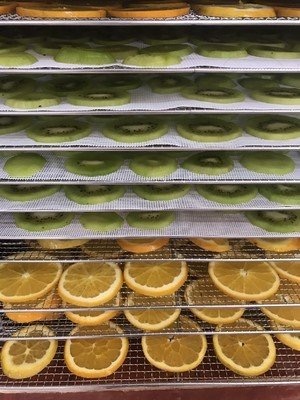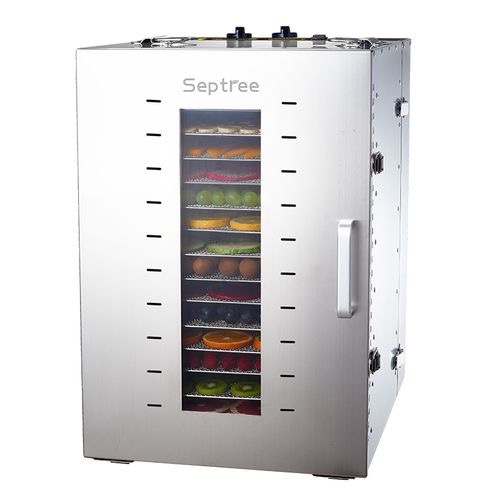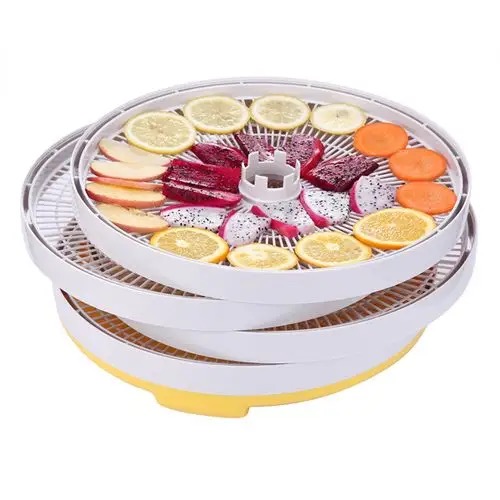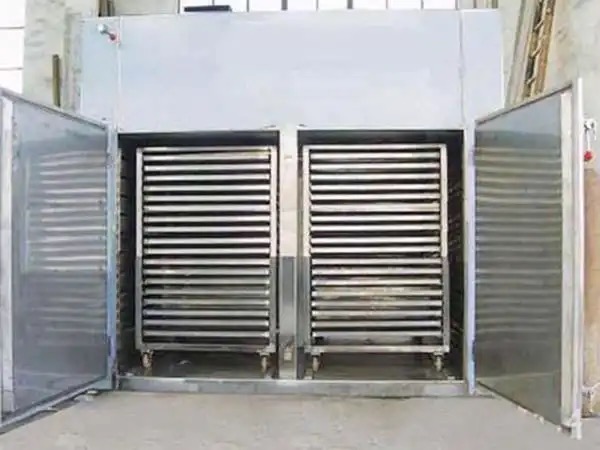
Content Menu
● Understanding Heat Pump Dryers
>> What is a Heat Pump Dryer?
● How Do Heat Pump Dryers Work?
● Advantages of Heat Pump Dryers
● Applications of Heat Pump Dryers in Food Processing
>> Types of Food Products Suitable for Heat Pump Drying
● Benefits of Using Heat Pump Dryers for Food Products
● Choosing the Right Heat Pump Dryer
● Installation and Maintenance Tips
● Energy Efficiency and Environmental Impact
>> Energy Consumption Comparison
● Innovations in Heat Pump Technology
● Case Studies in Food Processing
● Conclusion
● FAQ
>> 1. What is the main advantage of using a heat pump dryer?
>> 2. Can heat pump dryers be used for all types of fabrics?
>> 3. How does a heat pump dryer compare to traditional dryers?
>> 4. Are heat pump dryers suitable for commercial use?
>> 5. What maintenance is required for a heat pump dryer?
In recent years, heat pump dryers have gained significant popularity in the UK, especially among those looking for energy-efficient solutions for drying clothes. However, their application extends beyond laundry; they can also be utilized in various industries, including food processing. This article will delve into the workings of heat pump dryers, their advantages, and how they can be effectively used in food drying applications.

Understanding Heat Pump Dryers
What is a Heat Pump Dryer?
A heat pump dryer is a type of clothes dryer that uses a heat pump to recycle air and moisture. Unlike traditional dryers that vent hot air outside, heat pump dryers operate on a closed-loop system. They extract moisture from the air inside the drum and then use that moisture to heat the air again, making them significantly more energy-efficient.
How Do Heat Pump Dryers Work?
Heat pump dryers use a refrigeration cycle to dry clothes or food products. Here's a step-by-step breakdown of the process:
1. Air Intake: The dryer draws in air from the surrounding environment.
2. Heating: This air is then passed over a heat exchanger where it is heated up using refrigerant.
3. Moisture Extraction: The hot air enters the drum where it absorbs moisture from the items being dried.
4. Condensation: The moist air is then cycled back to the heat exchanger where it cools down, causing the moisture to condense into water.
5. Water Removal: The condensed water is collected in a tank or drained away.
6. Recycling Air: The now-dry air is reheated and sent back into the drum, continuing the drying process.
Advantages of Heat Pump Dryers
Heat pump dryers offer several advantages over traditional drying methods:
- Energy Efficiency: They consume significantly less energy compared to conventional dryers, making them cost-effective in the long run.
- Gentle Drying: The lower temperatures used in heat pump drying are less harsh on fabrics and food products, preserving their quality.
- Environmentally Friendly: By using less energy, these dryers contribute to lower carbon emissions.
- Versatility: In addition to clothing, heat pump dryers can be adapted for food drying applications, making them suitable for various industries.
Applications of Heat Pump Dryers in Food Processing
Heat pump dryers are particularly beneficial in food processing due to their ability to maintain low temperatures while effectively removing moisture. This method is essential for preserving the nutritional value and flavor of food products.
Types of Food Products Suitable for Heat Pump Drying
- Fruits (e.g., apples, bananas)
- Vegetables (e.g., carrots, tomatoes)
- Herbs (e.g., basil, thyme)
- Meats (e.g., jerky)
- Seafood (e.g., fish fillets)
Benefits of Using Heat Pump Dryers for Food Products
Using heat pump dryers for food processing offers numerous benefits:
1. Nutritional Preservation: The gentle drying process helps retain vitamins and minerals that can be lost during high-temperature drying methods.
2. Flavor Retention: Lower temperatures help preserve the natural flavors of food products.
3. Extended Shelf Life: By effectively removing moisture, heat pump dryers can significantly extend the shelf life of dried foods.
4. Reduced Energy Costs: Businesses can save on energy expenses while maintaining high-quality products.
5. Improved Safety Standards: Controlled drying conditions reduce the risk of spoilage and contamination.

Choosing the Right Heat Pump Dryer
When selecting a heat pump dryer for food processing or laundry purposes, several factors should be considered:
- Capacity: Determine the volume of items you need to dry regularly.
- Energy Efficiency Rating: Look for models with high energy efficiency ratings to maximize savings.
- Temperature Control Options: Ensure that there are adjustable temperature settings suitable for different types of food or fabrics.
- Ease of Maintenance: Choose models that are easy to clean and maintain over time.
Installation and Maintenance Tips
Proper installation and maintenance are critical for ensuring optimal performance from your heat pump dryer:
- Professional Installation: It's advisable to have your dryer installed by professionals who understand the specific requirements for food processing equipment.
- Regular Cleaning: Clean filters and condensate tanks regularly to prevent blockages and maintain efficiency.
- Monitor Performance: Keep an eye on drying times and adjust settings as necessary to optimize performance.
Energy Efficiency and Environmental Impact
The growing concern about climate change has led many consumers and businesses to seek out more sustainable options. Heat pump dryers stand out not only for their energy efficiency but also for their reduced environmental impact.
Energy Consumption Comparison
When comparing energy consumption between traditional vented dryers and heat pump dryers:
| Type of Dryer | Average Energy Consumption per Load |
| Traditional Vented | 3–5 kWh |
| Heat Pump Dryer | 1–2 kWh |
This significant difference means that businesses using heat pump dryers can reduce their overall energy costs while contributing positively to environmental sustainability efforts.
Innovations in Heat Pump Technology
As technology continues to evolve, so do heat pump dryers. Recent innovations include:
- Smart Technology Integration: Many modern heat pump dryers come equipped with smart technology that allows users to monitor and control their appliances remotely via smartphone apps.
- Enhanced Sensors: Advanced sensors can detect moisture levels more accurately, optimizing drying times and preventing over-drying.
- Improved Refrigerants: Newer models utilize eco-friendly refrigerants that have a lower global warming potential compared to older refrigerants.
These advancements not only improve efficiency but also enhance user experience by providing greater control over the drying process.
Case Studies in Food Processing
Several companies have successfully integrated heat pump drying technology into their operations:
1. Fruit Processing Plant:
A fruit processing plant switched from traditional drying methods to heat pump dryers and reported a 30% reduction in energy costs while improving product quality by retaining more nutrients and flavor.
2. Herb Drying Facility:
An herb drying facility implemented heat pump technology and found that they could dry herbs at lower temperatures without compromising quality, resulting in higher customer satisfaction and reduced waste due to spoilage.
3. Meat Jerky Production:
A company specializing in meat jerky production adopted heat pump dryers to enhance their processes. They noted improved consistency in product texture and flavor while also achieving significant savings on energy bills.
These case studies illustrate how versatile and beneficial heat pump dryers can be across different sectors within food processing.
Conclusion
Heat pump dryers represent an innovative solution for both laundry and food processing needs in the UK. Their energy efficiency, gentle drying capabilities, and versatility make them an excellent choice for businesses looking to improve their operations while reducing costs. As awareness grows about sustainable practices in food processing, heat pump dryers are likely to become even more prevalent in various industries. With continued advancements in technology, these appliances will only become more efficient and user-friendly, solidifying their place as essential equipment in both household and industrial settings.

FAQ
1. What is the main advantage of using a heat pump dryer?
The main advantage is energy efficiency; they consume less power compared to traditional dryers while providing effective drying capabilities.
2. Can heat pump dryers be used for all types of fabrics?
Yes, they are suitable for most fabrics due to their gentle drying process that minimizes damage.
3. How does a heat pump dryer compare to traditional dryers?
Heat pump dryers recycle air and moisture, leading to lower energy consumption and gentler drying compared to traditional vented dryers.
4. Are heat pump dryers suitable for commercial use?
Absolutely! They are ideal for commercial applications such as laundries and food processing facilities due to their efficiency and capacity options.
5. What maintenance is required for a heat pump dryer?
Regular cleaning of filters and condensate tanks is essential, along with monitoring performance for optimal operation.












